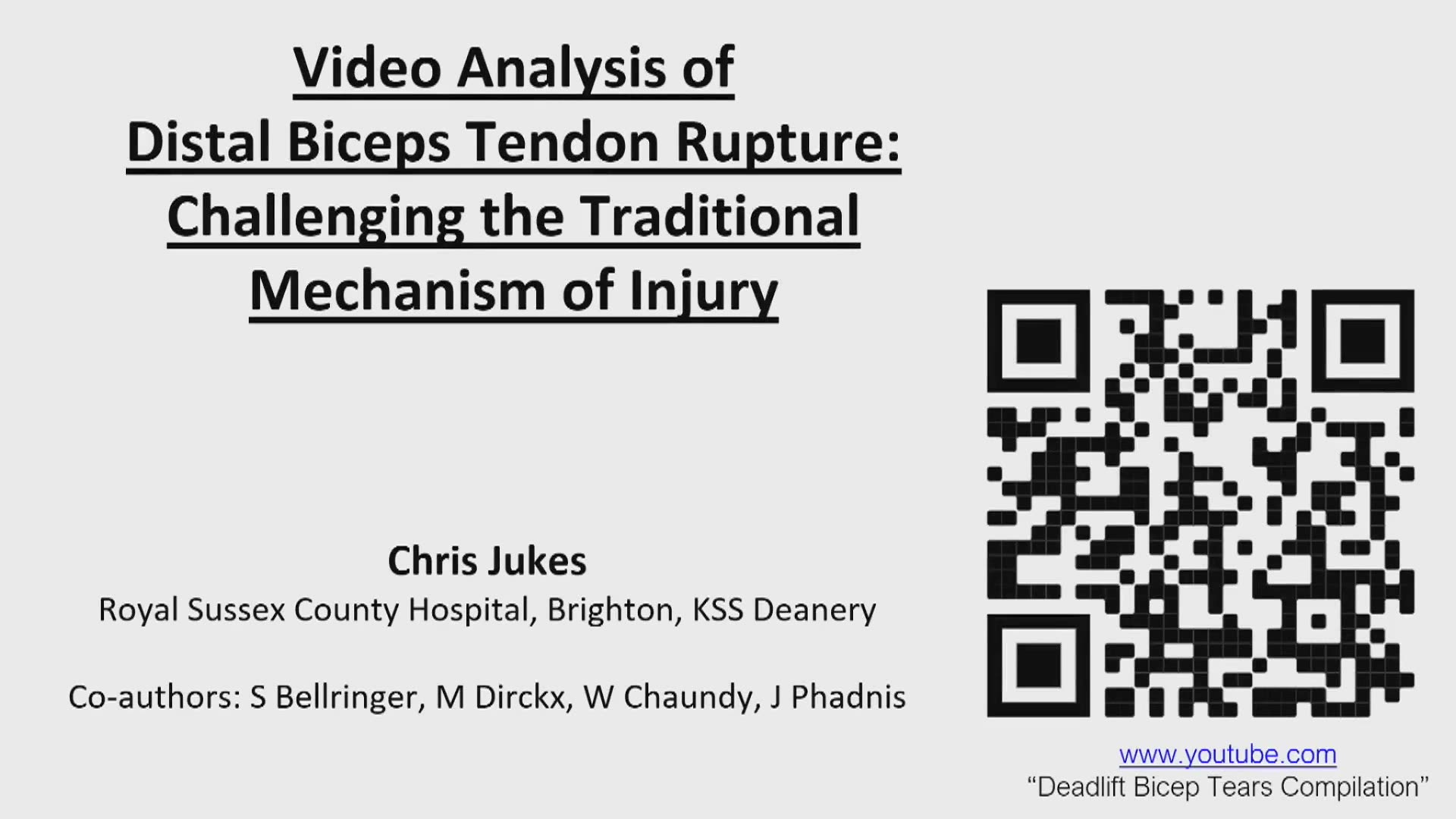Please login to view this media

- Talk
- 22/09/2021
- UK
A Video Analysis of Distal Bicep Tendon Ruptures: Challenging The Traditionally Accepted Mechanism of Injury
Description
In this presentation, Chris Jukes discusses the mechanics and characteristics of distal biceps ruptures, particularly in the context of heavy lifting and other activities. Starting with an engaging introduction, Chris invites the audience to scan a QR code leading to videos showcasing bicep ruptures. He highlights the common misconceptions surrounding the mechanisms of these injuries, especially in the context of deadlifting, where such injuries are often unexpected given the nature of the lift being isometric and not involving flexion of the arm.
The talk progresses into detailed findings from a video analysis of 56 cases of biceps ruptures reviewed by surgeons, revealing that around two-thirds of these cases occurred during deadlifts, with notable mentions of other activities such as bicep curls and arm wrestling. Chris underscores the importance of arm positioning—most ruptures happened when the arm was in a supinated position and near full extension. He articulates findings that challenge traditional understandings of how these injuries occur and emphasizes the significance of muscle contraction types associated with these ruptures, predominantly isometric rather than eccentric.
In conclusion, Chris advocates for a cautious approach in powerlifting, suggesting a double overhand grip for safety and advising rehabilitation strategies post-injury based on these findings. The audience engages with Chris by asking questions related to his findings, particularly the implications for the average person versus athletes and inquiries about external supports and steroid use among those featured in the videos. Chris acknowledges the self-selective nature of the population studied but reiterates the importance of recognizing arm position, rather than just contraction type, in preventing biceps ruptures.